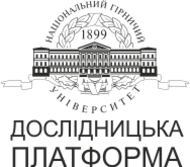№79-5
Чисельний аналіз температури стінки підземного каналу при спалюванні вугільного пилу
В.Г. Лозинський1
1Національний технічний університет «Дніпровська політехніка», Дніпро, Україна
Coll.res.pap.nat.min.univ. 2024, 79:49–62
Full text (PDF)
https://doi.org/10.33271/crpnmu/79.049
АНОТАЦІЯ
Мета. Визначення оптимального підходу до оцінки температурних характеристик стінки каналу та його аналіз при чисельному моделюванні горіння вугільного пилу.
Методика. Дослідження проведено шляхом чисельного моделювання процесу горіння вугільного пилу в циліндричному каналі довжиною 30 м та діаметром 1 м, який формується після бурошнекового видобутку вугілля. Для моделювання використано програмний продукт Ansys Fluent із застосуванням моделі незмішуваного горіння та k-ε моделі турбулентності. Розрахунки виконано для часових інтервалів 1, 12, 24, 36 і 48 годин.
Результати. Аналіз отриманих температурних полів показав, що максимальна температура в зоні горіння зростає з 1220ºC (1 година) до 1540ºC (24 години). Процес стабілізується на 12-ту годину із температурою 1490ºC. Виявлено, що температура в каналі швидко падає після 7–10 м від входу, стабілізуючись на рівні 490–520ºC. Основною причиною втрат тепла є висока теплопровідність вміщуючих порід. Визначено, що параметр Twallнайбільш адекватно відображає реальний температурний режим стінки та дозволяє оцінити термічний стан системи.
Наукова новизна. Вперше проведено комплексний аналіз динаміки температурного поля стінки каналу при тривалому горінні вугільного пилу в каналі пласта вугілля. Визначено критичні зони теплових втрат та стабілізації температури, що дозволяє обґрунтовано вибрати оптимальний параметр температури стінки для чисельного моделювання. Отримано показники зміни процентного розподілу статичної температури в каналі та температури стінки навколо каналу з часом.
Практична значимість. Отримані результати можуть бути використані для вдосконалення методик чисельного моделювання процесів підземного спалювання та когазифікації вугілля. Визначені закономірності розподілу температури дозволяють оптимізувати параметри подачі палива та повітря для покращення ефективності термохімічних перетворень. Запропонований підхід може бути застосований при проєктуванні технологій когазифікації.
Ключові слова: комп’ютерне моделювання, горіння вугільного пилу, температура стінки, теплопередача, когазифікація.
Перелік посилань
1. Salieiev, I. (2024). Organization of processes for complex mining and processing of mineral raw materials from coal mines in the context of the concept of sustainable development. Mining of Mineral Deposits, 18(1), 54–66. https://doi.org/10.33271/mining18.01.054
2. Bondarenko, V., Salieiev, I., Kovalevska, I., Chervatiuk, V., Malashkevych, D., Shyshov, M., & Chernyak, V. (2023). A new concept for complex mining of mineral raw material resources from DTEK coal mines based on sustainable development and ESG strategy. Mining of Mineral Deposits, 17(1), 1–16. https://doi.org/10.33271/mining17.01.001
3. Williams, A., Pourkashanian, M., & Jones, J.M. (2001). Combustion of pulverised coal and biomass. Progress in energy and combustion science, 27(6), 587–610. https://doi.org/10.1016/S0360-1285(01)00004-1
4. Lozynskyi, V. (2023). Critical review of methods for intensifying the gas generation process in the reaction channel during underground coal gasification (UCG). Mining of Mineral Deposits, 17(3), 67–85. https://doi.org/10.33271/mining17.03.067
5. Lozynskyi, V., Saik, P., Petlovanyi, M., Sai, K., Malanchuk Z., & Malanchyk, Ye. (2018). Substantiation into mass and heat balance for underground coal gasification in faulting zones. Inzynieria Mineralna, 19(2), 289–300. http://doi.org/10.29227/IM-2018-02-36
6. Yelubay, M., Massakbayeva, S., Aitkaliyeva, G., & Radelyuk, I. (2021). Processing of ash and slag waste. Engineering Journal of Satbayev University, 143(6), 79–84. https://doi.org/10.51301/vest.su.2021.i6.11
7. Saik, P., & Berdnyk, M. (2022). Mathematical model and methods for solving heat-transfer problem during underground coal gasification. Mining of Mineral Deposits, 16(2), 87–94. https://doi.org/10.33271/mining16.02.087
8. Ghose, P., Sahoo, T.K., & Sahu, A.K. (2023). Pulverized coal combustion computational modeling approach: A review. Proceedings of the Institution of Mechanical Engineers, Part A: Journal of Power а Energy, 237(4), 797–818. https://doi.org/10.1177/095765092211329
9. Zhong, B.J., Shi, W.W., & Fu, W.B. (2002). Effects of fuel characteristics on the NO reduction during the reburning with coals. Fuel processing technology, 79(2), 93–106. https://doi.org/10.1016/S0378-3820(02)00102-9
10. Krazinski, J.L., Buckius, R.O., & Krier, H. (1979). Coal dust flames: A review and development of a model for flame propagation. Progress in Energy and Combustion science, 5(1), 31–71. https://doi.org/10.1016/0360-1285(79)90018-2
11. Kansa, E.J., & Perlee, H.E. (1980). A transient dust-flame model: application to coal-dust flames. Combustion and Flame, 38, 17–36. https://doi.org/10.1016/0010-2180(80)90034-6
12. Lozynskyi, V. (2024). Numerical simulation of carbonaceous raw material combustion in a coal seam channel. Mining of Mineral Deposits, 18(4), 109–124. https://doi.org/10.33271/mining18.04.109
13. Sheng, C., Moghtaderi, B., Gupta, R., & Wall, T.F. (2004). A computational fluid dynamics based study of the combustion characteristics of coal blends in pulverised coal-fired furnace. Fuel, 83(11–12), 1543–1552. https://doi.org/10.1016/j.fuel.2004.02.011
14. Aliukov, S., & Osintsev, K. (2021). Mathematical modeling of coal dust screening by means of sieve analysis and coal dust combustion based on new methods of piece-linear function approximation. Applied Sciences, 11(4), 1609. https://doi.org/10.3390/app11041609
15. Shi, X., Chen, X., Zhang, Y., Zhang, Y., Guo, R., Zhao, T., & Liu, R. (2022). Numerical simulation of coal dust self–ignition and combustion under inclination conditions. Energy, 239, 122227. https://doi.org/10.1016/j.energy.2021.122227
16. Shotayeva, Ye., Ryspayeva, М., & Berezovskaya, I. (2021). Increasing the efficiency of gasoline combustion depending on the spray angle in a model combustion chamber. Engineering Journal of Satbayev University, 143(6), 53–57. https://doi.org/10.51301/vest.su.2021.i6.07
17. Lertanan, T., Podjanasatja, V., Chuchan, D., & Sukjai, Y. (2024). Investigating the Characteristics of Pulverized Coal Combustion Using Ansys Fluent: A CFD Study of a 300 kW Swirl Burner. Journal of Combustion, 2024(1), 3128387. https://doi.org/10.1155/jc/3128387
18. Zhang, J., Prationo, W., Zhang, L., & Zhang, Z. (2013). Computational fluid dynamics modeling on the air-firing and oxy-fuel combustion of dried Victorian brown coal. Energy & fuels, 27(8), 4258–4269. https://doi.org/10.1021/ef400032t
19. Marangwanda, G.T., Madyira, D.M., Chihobo, H.C., & Babarinde, T.O. (2021). Modelling co-combustion of bituminous coal and pine sawdust: thermal behaviour. Fuel Communications, 9, 100035. https://doi.org/10.1016/j.jfueco.2021.100035
20. Arasappan, Y. (2022). Mathematical Simulation of Pulverized Coal Combustion. Acta Mechanica Slovaca, 26(3), 64–69.https://doi.org/10.21496/ams.2023.008
21. Du, S., Wang, J., Yu, Y., & Zhou, Q. (2023). Coarse-grained CFD-DEM simulation of coal and biomass co-gasification process in a fluidized bed reactor: Effects of particle size distribution and operating pressure. Renewable Energy, 202, 483–498. https://doi.org/10.1016/j.renene.2022.11.073
22. Bazaluk, O., Lozynskyi, V., Falshtynskyi, V., Saik, P., Dychkovskyi, R., & Cabana, E. (2021). Experimental Studies of the Effect of Design and Technological Solutions on the Intensification of an Underground Coal Gasification Process. Energies, 14(14), 4369. https://doi.org/10.3390/en14144369




